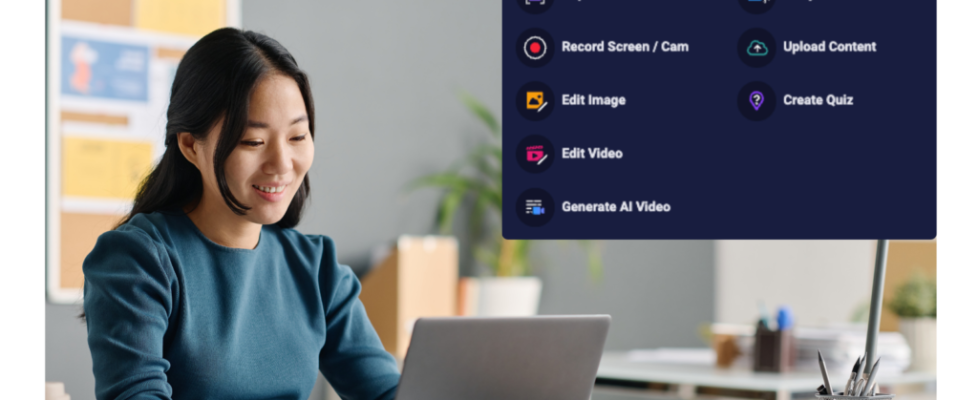When it comes to using technology in student learning, everyone at St. Paul’s School for Girls in Brooklandville, Maryland turns to Director of Technology Emily Ziegler. Ziegler has dedicated her career to education, completing a doctorate in instructional technology. Her passion for tech helps teachers and students realize their potential for higher education by setting them up with fast and simple approaches to getting work done, inspiring young minds to explore and grow, helping students learn where they are, and getting students to where they need to be.
Sounds easy, right? Well, it is with someone like Ziegler on your team, who is considered an educational game changer.
Using Instructional Technology to Track Students’ Progress
Ziegler remembers the moment she realized she could have failed as a teacher. At the time, 32 students filled her sixth-grade English class. Of those students, 15 had an Individualized Education Program (IEP), which is a document developed for each public school child who needs special education.
“I had students in the class that were everywhere from a second-grade reading level to probably a tenth-grade reading level,” she recalled. Faced with this challenge that many teachers experience, she reached for new tools. She began using instructional technology to help get a better pulse on how far her class was spread. That’s when things went from a “no-win” situation to sparking learning in her classroom.
She smiled as she remembered, “Oh my goodness! I can use technology and really be able to see what my students know. I can track their progress, or I can help give them support. It just made it so much more efficient and more manageable for me to help reach more students in a meaningful way.”
One gem of knowledge Ziegler shared is that not all students have a traditional approach that shows what they have absorbed. So providing students with a
way to express what they’ve learned is essential to their growth and future.
“Exploring the progress of students is just as important of a learning opportunity as the solution that they come up with at the end,” Ziegler said. The tech portion gives them the opportunity to create, evaluate, and generate high-level work, which is best matched to their learning profile.
Tools That Help Engage Students
Ziegler relies on multiple tools to help engage her students. She’s a fan of polling tools such as Formative and Plickers, which gather students’ opinions about various topics. She then uses students’ responses to synthesize her discussions. She believes it extends to a higher level of learning.
When it comes to video, she prefers ScreenPal.
“It’s one of my favorites really, because I use that a lot for students to teach us about what they learned. I do a lot of reflection with it.”
The use of video also adds another layer to students’ education by holding them accountable in the classroom. Gone are the days where students can say they missed a class lecture or they simply don’t know how to do something.
Now Ziegler tasks her students with creating simple videos such as “How to Use the Office 365 System.” The students use ScreenPal to record their how-to videos, which are then stored on the school’s server. These videos are easily shared across the school so that no one is left behind.”
“It helps the students have ownership of things. They are learning from one another in the process, and they are learning presentation skills, too,” she said.
Ziegler loves the flexibility of ScreenPal’s tools and features. Students who tend to be more camera shy can opt for on-screen tutorials that use their voice for storytelling. For the more camera-ready students, she hears those students say, “I really want that video-in-video option.”
As students become increasingly blitzed by multimedia, Ziegler knows ScreenPal is a tool appropriate for their uses. “ScreenPal allows students to be able to experience and use technology in a way that’s meaningful to them because of the world they are living in,” she said.
Video Saves Time for Teachers and Students
She hopes with her knowledge of tech in the classroom that she is helping make other teachers’ lives easier. Saving teachers’ time is a top priority, and with the use of video, she’s confident she’s giving them back more time.
Ziegler said that teachers spend quite a bit of time repeatedly explaining the same questions that students have, or taking them away from the group to individually show them where to point and click on their computers. Ziegler relies on ScreenPal to relieve the time pressure. She says video is great for sub plans, too.
“When you create a video, it’s done and your kids can access it at any point.” Parents can also access the videos to understand what their children are learning. For teachers, students, and parents, video makes life a lot easier and eliminates a lot of the questions and the what-if’s and what-how’s.
Share Your Story
ScreenPal would like to thank Emily Ziegler for her continued effort and determination to spread the use of educational technology with students and teachers in the classroom. If you have a similar story to tell or would like to share the story of an extraordinary educator, email our marketing team (marketing@screenpal.com).
Quick Links
How video enhanced this company’s way of communicating

































